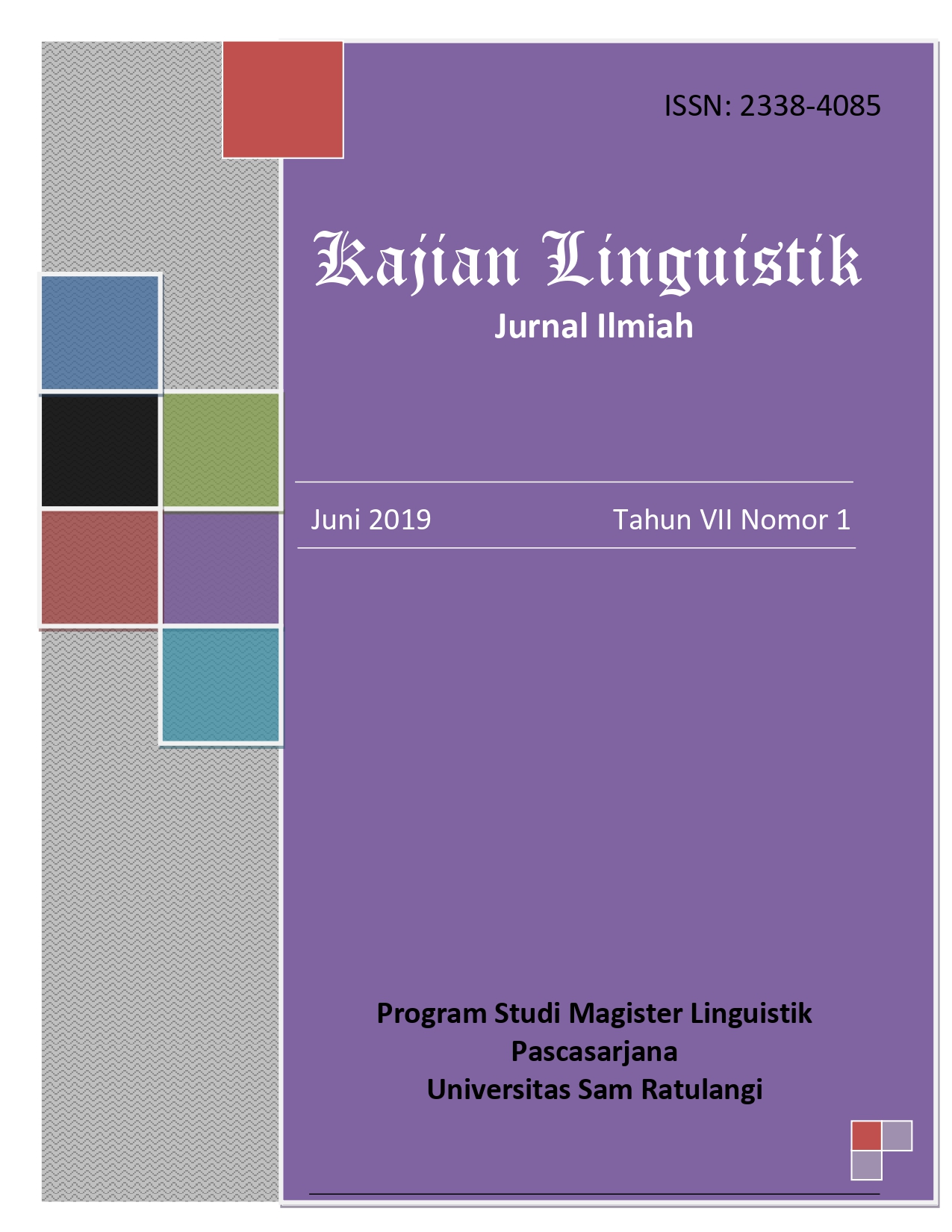Maintaining Minahasan Languages Through Oral Tradition
DOI:
https://doi.org/10.35796/kaling.7.1.2019.24773Abstract
According to Ethnologue, Minahasan languages, such as Tontemboan, Tombulu, Tonsea, Tolour, Tonsawang, Ratahan, Ponosakan, and Bantik are categorized as threatened and even shifting. It means that if there are no actual measures to rejuvenate the languages, it could be foreseen that Minahasan languages will be left with no native speakers. Mainly treated as vernaculars, and with the internalization of Manado Malay as the lingua franca in Minahasa and Indonesian language as the sole official language in Indonesia, both factors gave impact to the condition of Minahasan languages. That being said, in general, Minahasan languages have less prestige than Manado Malay and Indonesian in daily communication in Minahasa.
Therefore, in this paper, I would like to argue the importance of language maintenance, especially for endangered languages in Minahasa that such languages should be learned and used by people in Minahasa according to their areas. Moreover, I would explain what are considered to be oral tradition and the previous examples of documented oral tradition in Minahasan languages, then the reason of the importance of oral tradition in language maintenance and language learning.
Keywords: Oral Tradition, Minahasan Languages, Language Maintenance

